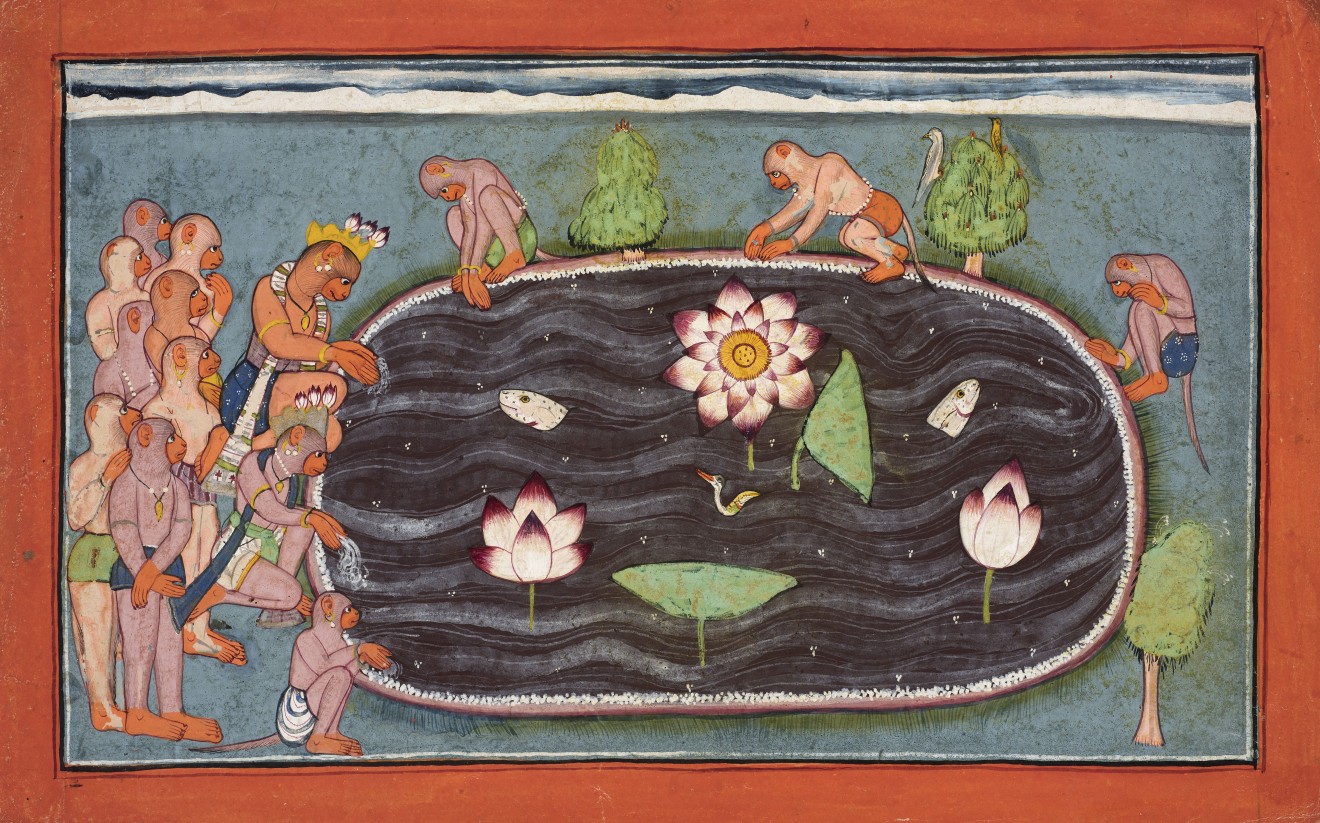Style III, Book IV (Kishkindha Kanda)
Kulu or Mandi, India
Tempera on paper
Circa 1700 – 1710
The current painting is from an album of illustrations known as the 'Shangri' Ramayana after Shangri, the place of residence of a branch of the royal family of Kulu who were formerly in possession of the largest portion of these paintings. The Shangri Ramayana is widely considered to be one of the most important series of paintings from the Punjab Hills.
W. G. Archer, who was one of the first scholars to examine the Shangri Ramayana, divided the paintings into different stylistic groups. For further discussion concerning the stylistic types see W. G. Archer, Indian Paintings from the Punjab Hills, London, 1973, vol. 1, p. 328. Style III of this dispersed series includes these wonderfully humanized portraits of the monkeys and are found mostly in the in the Book of Kishkindha. Pages in Style III are characterized by Archer as notable for ‘the impish treatment of the monkeys, the rioting exuberance with which trees are depicted and the bold gusto which is everywhere apparent.’ (Archer, 1973, p. 328). For further discussion as to the disputed origin of the series see amongst others Goswamy and Fischer, pp. 76-91 (who place styles I and II in Bahu); and Britschgi and Fischer 2008, pp. 12-14 (who attribute the entire series to Bahu).
Paintings from the Shangri Ramayana series are in the collections of the National Museum, New Delhi; Bharat Kala Bhavan, Benaras; British Museum and Victoria and Albert Museum amongst others. For other illustrations from the same series, see Sotheby's New York, April 1, 2005, lots 108 & 109; September 20, 2005, lots 125 & 126; March 29, 2006, lots 157 & 158 and September 19, 2006, lots 9 & 10.
Literature
LITERATURE:
For comparable works see
W. G. Archer, Indian Painting from the Punjab Hills, Sotheby Parke Bernet, London, 1973
W.G. Archer,Visions of Courtly India: the Archer Collection of Pahari Miniatures, International Exhibitions Foundation, London, New York, 1976
J. Britschgi, and E. Fischer, Rama und Sita: das Ramayana in der Malerei Indiens, Museum Rietberg, Zurich, 2008
